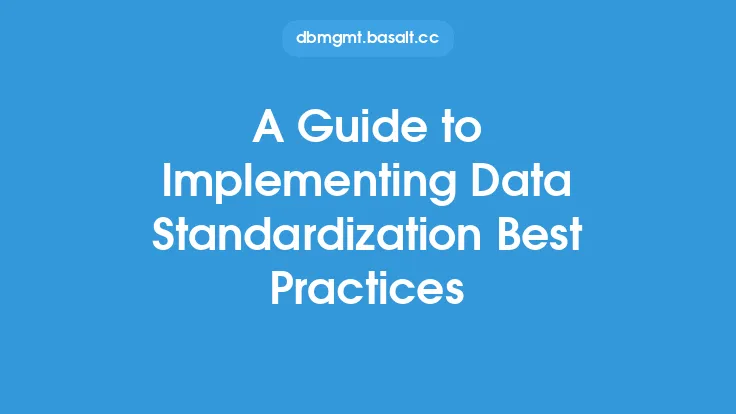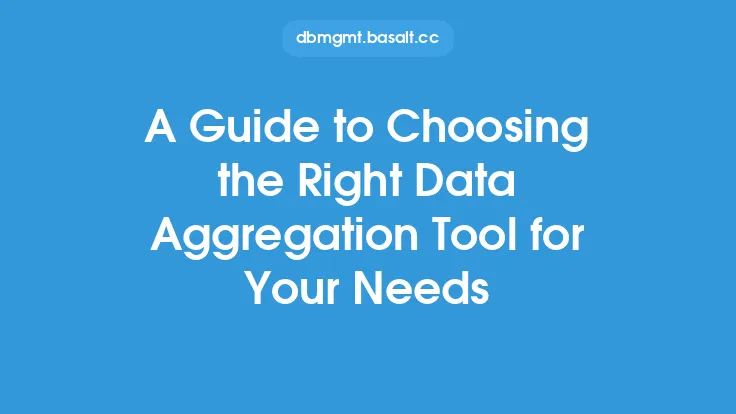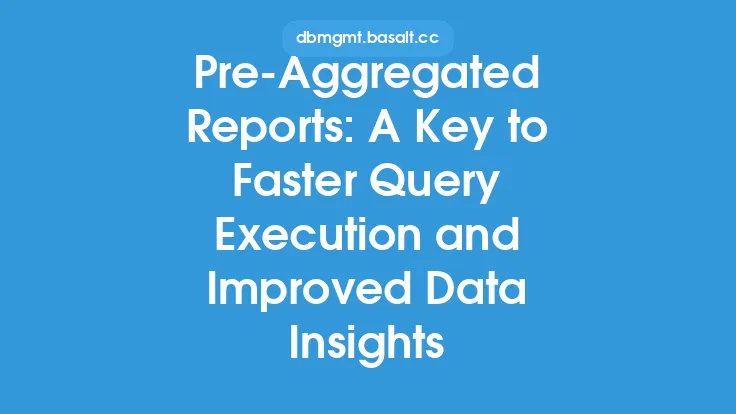Implementing a data warehouse is a crucial step for organizations seeking to enhance their data insights and make informed business decisions. A data warehouse is a centralized repository that stores data from various sources in a single location, making it easier to access and analyze. In this article, we will delve into the world of data warehousing and provide a comprehensive guide on how to implement a data warehouse for enhanced data insights.
Introduction to Data Warehousing
Data warehousing is a process that involves collecting, storing, and managing data from various sources in a single location. The primary goal of a data warehouse is to provide a centralized platform for data analysis and reporting, enabling organizations to make informed business decisions. A data warehouse typically consists of three main components: a data source, a data storage system, and a data analysis tool. The data source provides the raw data, the data storage system stores and manages the data, and the data analysis tool is used to analyze and extract insights from the data.
Benefits of Implementing a Data Warehouse
Implementing a data warehouse can bring numerous benefits to an organization. Some of the key benefits include improved data quality, enhanced data analysis, and better decision-making. A data warehouse provides a single version of truth, ensuring that all stakeholders have access to the same data and reducing errors and inconsistencies. Additionally, a data warehouse enables organizations to analyze large amounts of data from various sources, providing valuable insights that can inform business decisions. Furthermore, a data warehouse can help organizations to identify trends, patterns, and correlations, enabling them to anticipate and respond to changing market conditions.
Data Warehouse Architecture
A data warehouse architecture typically consists of three tiers: the presentation tier, the application tier, and the data tier. The presentation tier is responsible for providing a user interface for data analysis and reporting, the application tier manages the data and provides business logic, and the data tier stores and manages the data. The data tier is further divided into two sub-tiers: the data storage tier and the data access tier. The data storage tier stores the data in a relational database management system, and the data access tier provides a layer of abstraction between the data storage tier and the application tier.
Data Warehouse Design
Designing a data warehouse requires careful planning and consideration of several factors, including data sources, data quality, and data analysis requirements. The design process typically involves the following steps: defining the scope and objectives of the data warehouse, identifying the data sources and requirements, designing the data model, and selecting the appropriate technology and tools. A well-designed data warehouse should be scalable, flexible, and able to handle large amounts of data from various sources.
Data Warehouse Implementation
Implementing a data warehouse involves several steps, including data extraction, data transformation, and data loading. Data extraction involves extracting data from various sources, data transformation involves converting the data into a standardized format, and data loading involves loading the data into the data warehouse. Additionally, implementing a data warehouse requires careful consideration of data quality, data security, and data governance. Organizations should establish clear policies and procedures for data management, ensure that data is accurate and complete, and implement robust security measures to protect sensitive data.
Data Warehouse Maintenance
Maintaining a data warehouse is an ongoing process that requires regular updates, backups, and performance tuning. Organizations should establish a regular maintenance schedule to ensure that the data warehouse remains up-to-date and running smoothly. This includes monitoring data quality, performing data backups, and optimizing database performance. Additionally, organizations should continuously review and refine their data warehouse design to ensure that it remains aligned with changing business requirements and data analysis needs.
Data Analysis and Reporting
A data warehouse provides a powerful platform for data analysis and reporting, enabling organizations to extract valuable insights from large amounts of data. Data analysis involves using various tools and techniques to analyze and interpret the data, while reporting involves presenting the findings in a clear and concise manner. Organizations can use various data analysis tools, such as business intelligence software, data mining tools, and statistical analysis software, to analyze and extract insights from the data. Additionally, organizations can use reporting tools, such as dashboards and scorecards, to present the findings in a clear and concise manner.
Best Practices for Data Warehouse Implementation
Implementing a data warehouse requires careful planning and consideration of several factors, including data quality, data security, and data governance. Some best practices for data warehouse implementation include establishing clear policies and procedures for data management, ensuring that data is accurate and complete, and implementing robust security measures to protect sensitive data. Additionally, organizations should continuously review and refine their data warehouse design to ensure that it remains aligned with changing business requirements and data analysis needs. Furthermore, organizations should establish a regular maintenance schedule to ensure that the data warehouse remains up-to-date and running smoothly.
Conclusion
Implementing a data warehouse is a crucial step for organizations seeking to enhance their data insights and make informed business decisions. A data warehouse provides a centralized platform for data analysis and reporting, enabling organizations to extract valuable insights from large amounts of data. By following the guidelines and best practices outlined in this article, organizations can implement a data warehouse that meets their needs and provides a strong foundation for data-driven decision-making. Whether you are a seasoned data professional or just starting out, this guide provides a comprehensive overview of the key concepts, techniques, and best practices for implementing a data warehouse and unlocking the full potential of your data.





